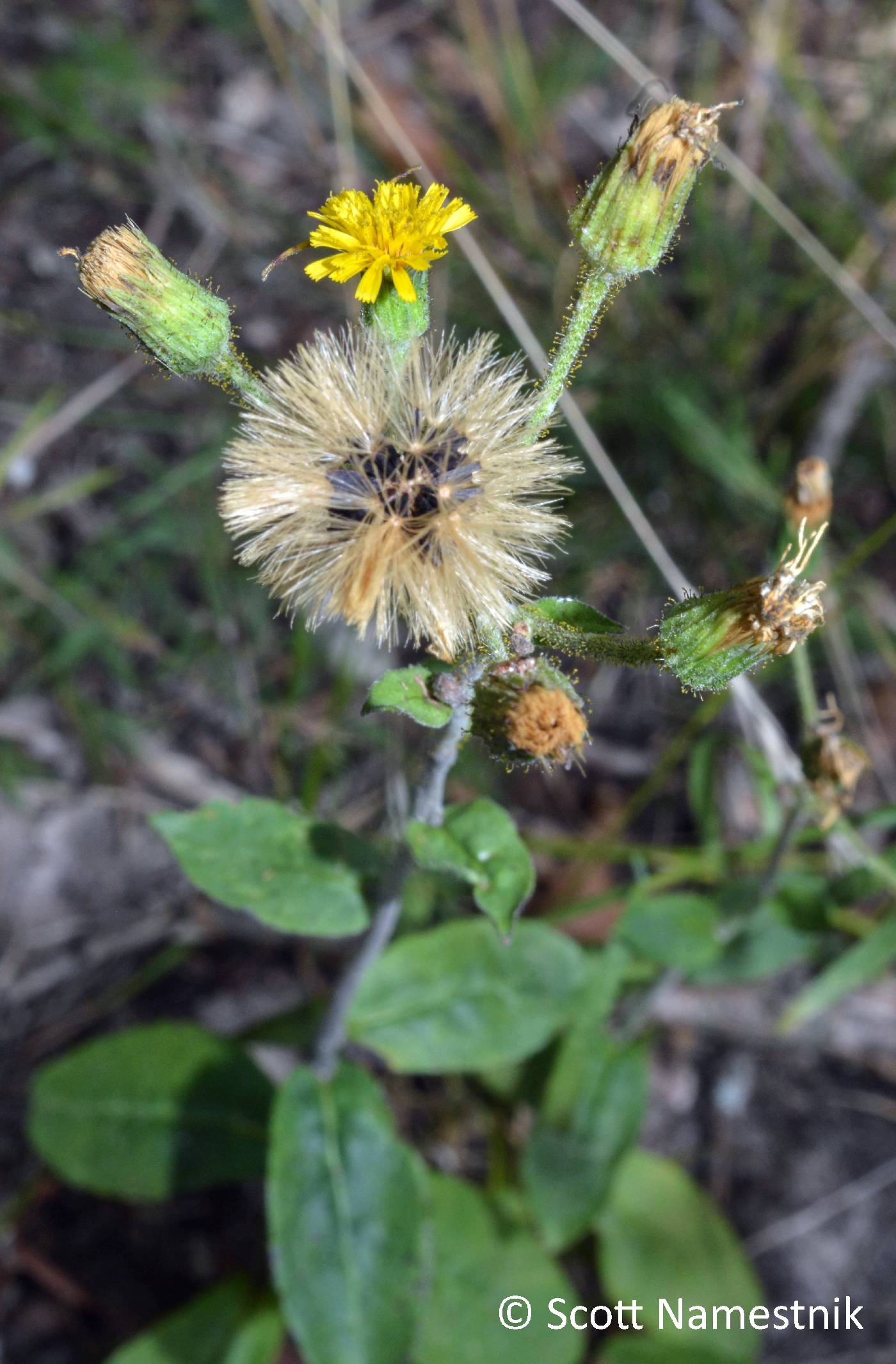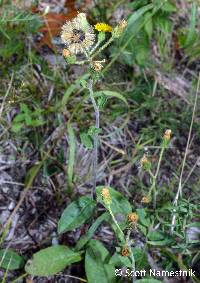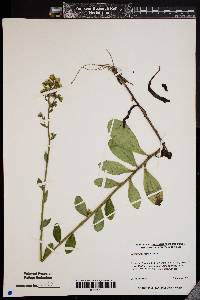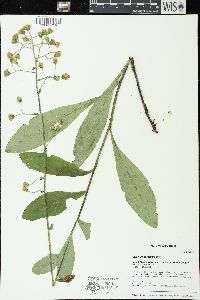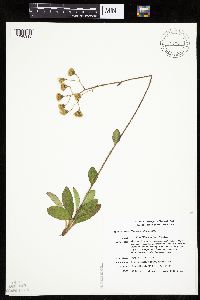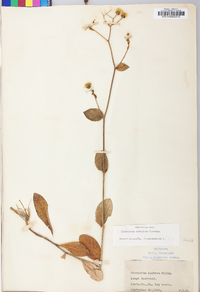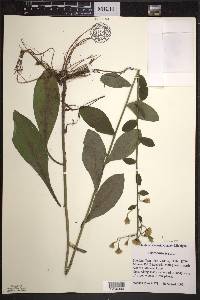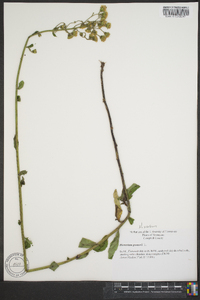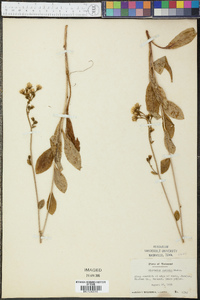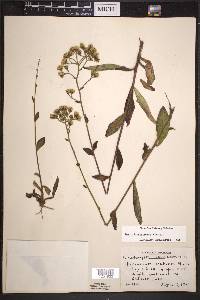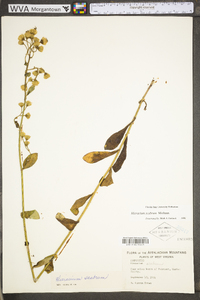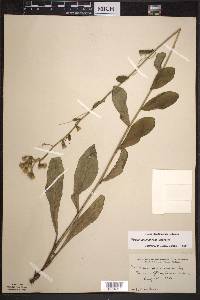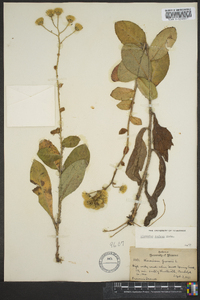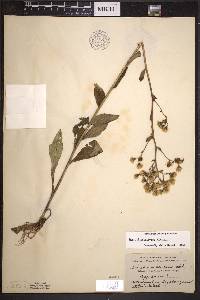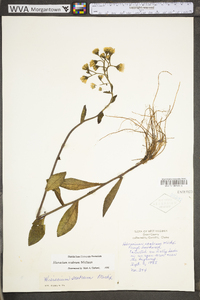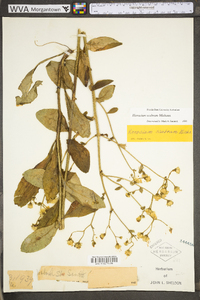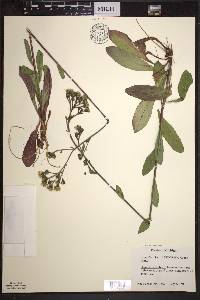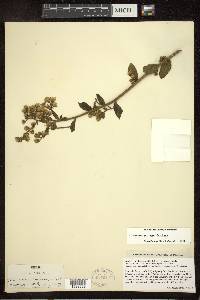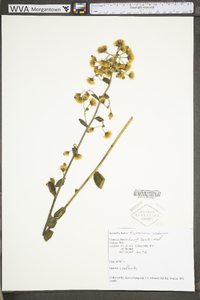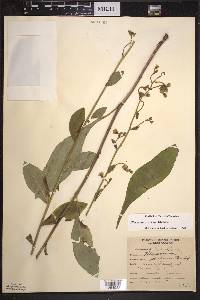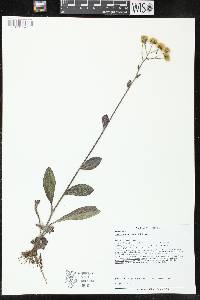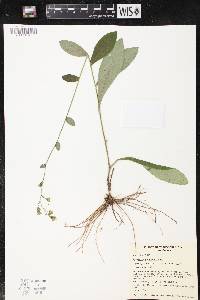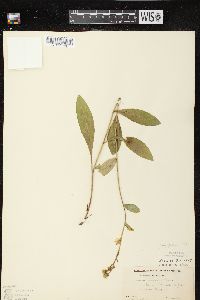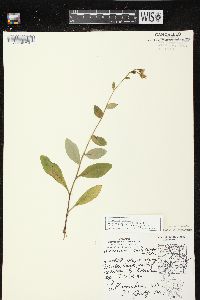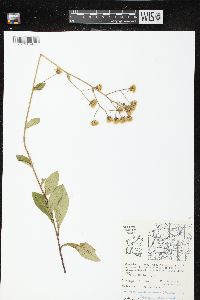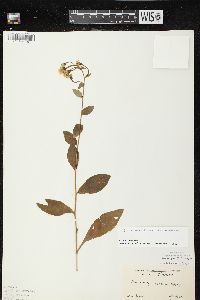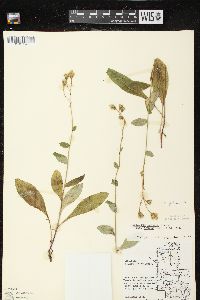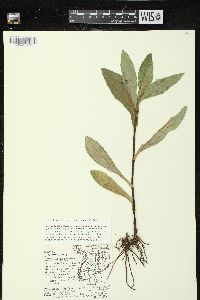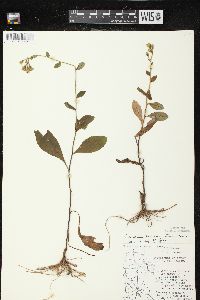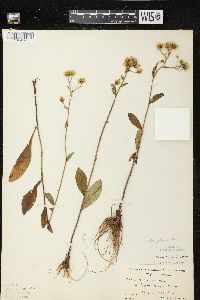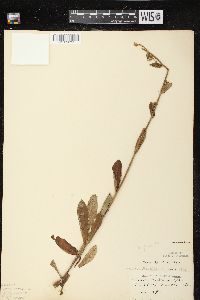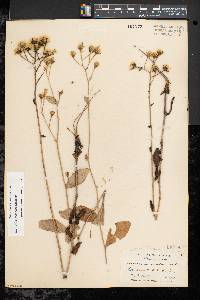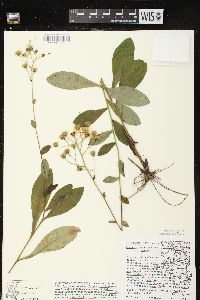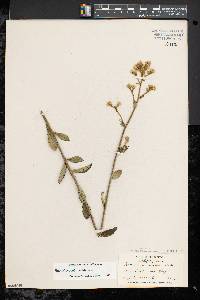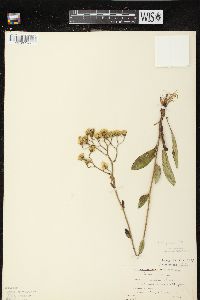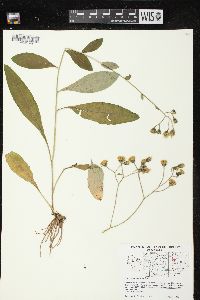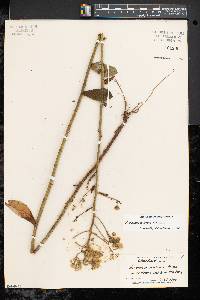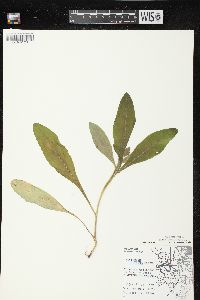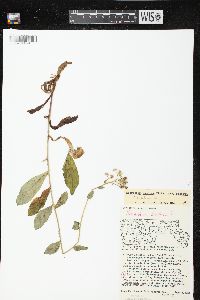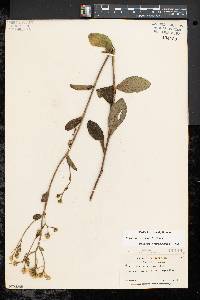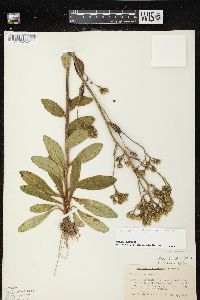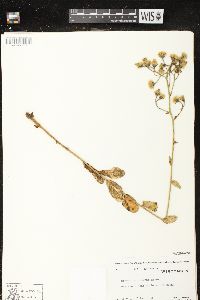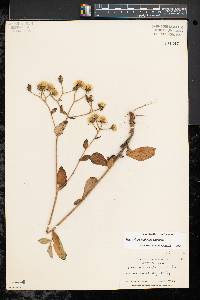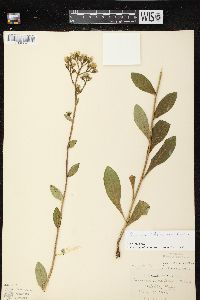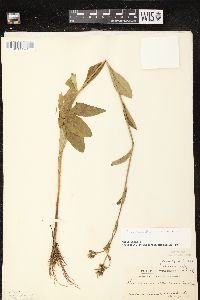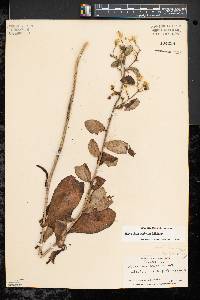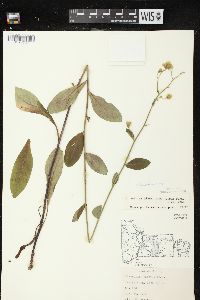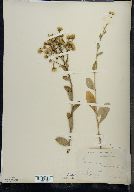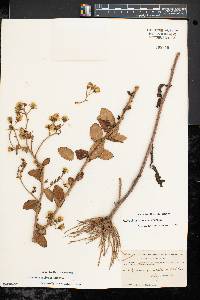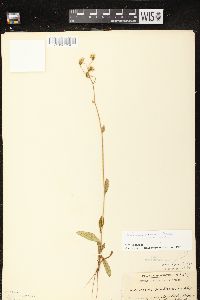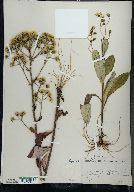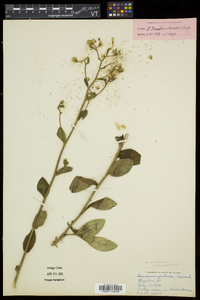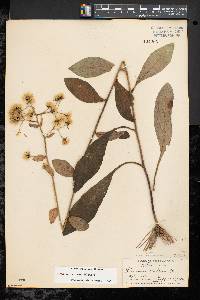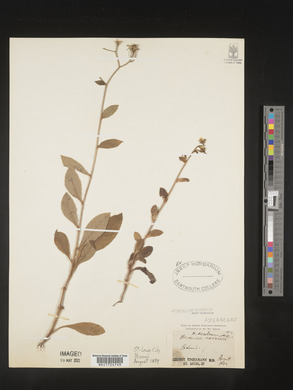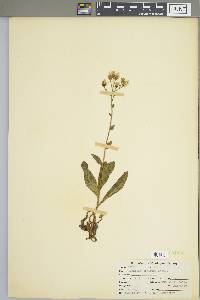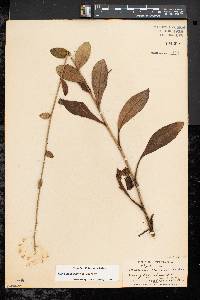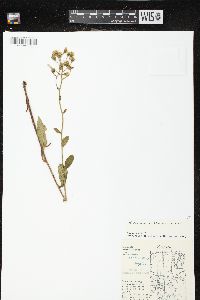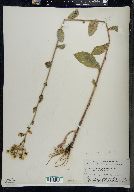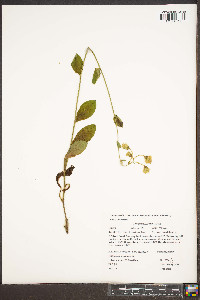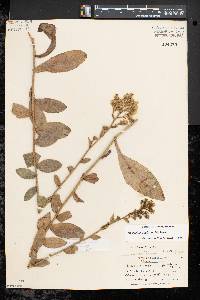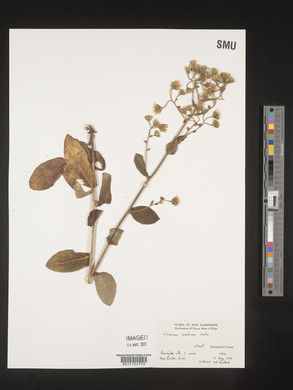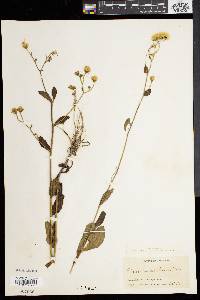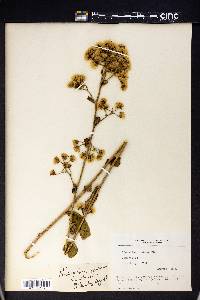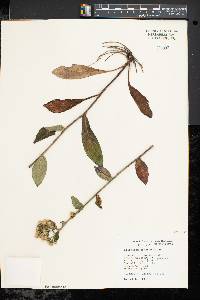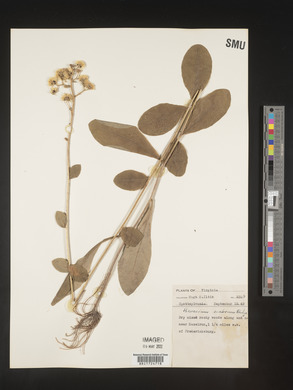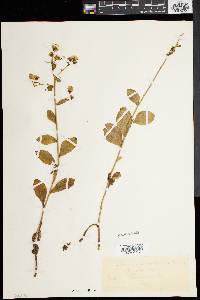Hieracium scabrum
|
|
|
|
Family: Asteraceae
Rough Hawkweed
|
Plants (15-)30-60+ cm. Stems proximally piloso-hirsute (hairs 1.5-5+ mm), sometimes stellate-pubescent as well, distally stellate-pubescent, sometimes stipitate-glandular, rarely piloso-hirsute (hairs 1-2+ mm). Leaves: basal 0(-3), cauline 6-24+; blades elliptic or oblanceolate to spatulate or lanceolate, (20-)35-80(-120+) × (10-)20-35(-50+) mm, lengths 2-6+ times widths, bases cuneate to rounded-truncate, margins usually entire, sometimes denticulate, apices rounded to obtuse, faces hirtellous to piloso-hirsute (hairs 0.5-1+ mm). Heads (5-)10-25(-50+) in corymbiform to paniculiform arrays. Peduncles stellate-pubescent and stipitate-glandular (hairs 0.3-0.6+ mm). Calyculi: bractlets 12-15+. Involucres campanulate, 7-9 mm. Phyllaries 13-21+, apices ± acuminate, abaxial faces stellate-pubescent and stipitate-glandular, rarely, if ever, piloso-hirsute. Florets (30-)40-60+; corollas yellow, 9-11 mm. Cypselae columnar, 2.5-3 mm; pappi of 30-40+, stramineous bristles in ± 2 series, 6-7 mm. Flowering Jul-Sep. Sandy soils, open, disturbed sites (fields, stream sides), wooded sites; 10-300+ m; N.B., N.S., Ont., P.E.I., Que.; Ark., Conn., Del., D.C., Ga., Ill., Ind., Iowa, Ky., Maine, Md., Mass., Mich., Minn., Mo., N.H., N.J., N.Y., N.C., Ohio, Okla., Pa., R.I., S.C., Tenn., Vt., Va., W.Va., Wis. Stems mostly solitary from a short, simple caudex or crown, 2-15 dm, setose at least near the base with spreading hairs seldom as much as 5 mm, becoming stellate and long-stipitate-glandular upward, densely so in the infl; lvs setose on both sides, more densely so on the petiole and along the midrib beneath; basal and often also the lowermost cauline lvs ordinarily deciduous, the lower lvs broadly oblanceolate to elliptic, 5-20 cm (including the usually short petiole) נ1-4.5 cm, the others progressively
reduced upward, soon becoming sessile, so that the upper part of the stem does not appear to be very leafy; infl open-corymbiform (especially in smaller plants) to more often elongate and cylindric; invol 6-9 mm, hispid with blackish, mostly gland-tipped hairs, especially toward the also stellate-hairy base; fls 40-100; achenes 2-3 mm, truncate, only very obscurely if at all narrowed upward; 2n=18. Open ground and dry woods; especially in sandy soil; N.S. and Que. to Minn., s. to Va., Ky., Mo., and in the mts. to n. Ga. July-Sept. Gleason, Henry A. & Cronquist, Arthur J. 1991. Manual of vascular plants of northeastern United States and adjacent Canada. lxxv + 910 pp. ©The New York Botanical Garden. All rights reserved. Used by permission. From Flora of Indiana (1940) by Charles C. Deam Infrequent throughout the area indicated on the map. This species also prefers slightly acid and sandy soil. It is usually found in dry soil on slopes with black and white oak and rarely on sandy flats with the same associates. Besides the counties shown on the map, it has been reported from Fayette, Parke, Tippecanoe, and White Counties. ...... Indiana Coefficient of Conservatism: C = 5 Wetland Indicator Status: N/A |

